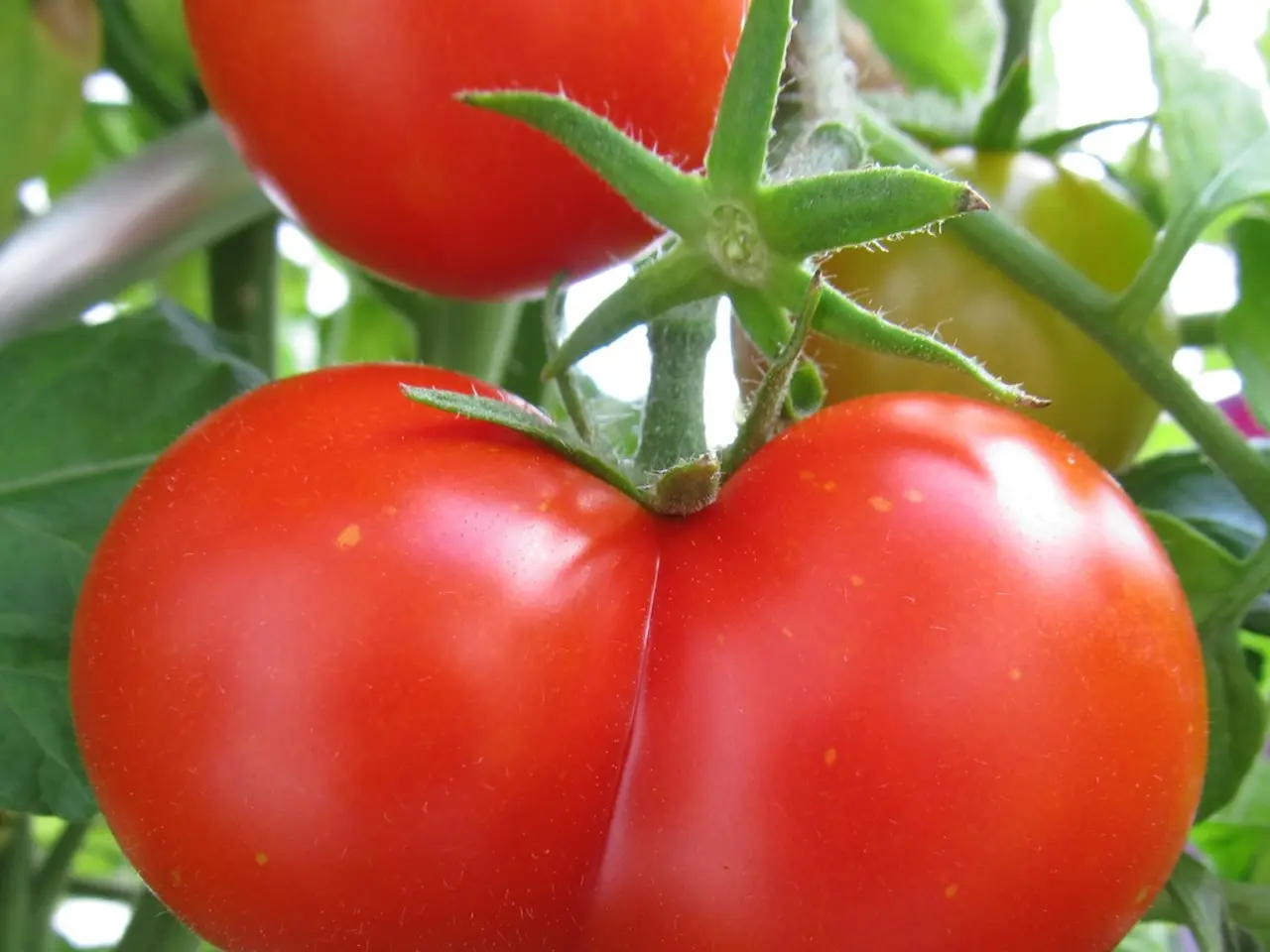Top-Tier Preparation Strategies for Homegrown Tomatoes in Your Backyard
In the quest for a bountiful tomato harvest, a crucial aspect to consider is the soil mix. A well-prepared soil bed can significantly impact the growth, health, and yield of tomato plants.
Choosing the right soil is essential, and factors to consider include the soil's texture, drainage, and nutrient content. Tomatoes require a balanced mix of key nutrients for healthy growth: Nitrogen promotes leafy growth, Phosphorus supports root development and flowering, and Potassium enhances fruit quality and disease resistance.
To prepare soil for tomatoes, start by testing the soil's pH level. Tomatoes prefer slightly acidic soil, with a pH between 6.0 and 6.8. If the pH level is outside this range, amendments like lime or sulfur can be used to adjust it.
Incorporate organic matter into the soil to enrich nutrient content, improve soil structure, and enhance moisture retention. A 3 to 4-inch layer of well-rotted compost or aged manure is ideal. Organic soil is chosen for tomatoes as it is full of beneficial microbes that help plants fight diseases.
For raised beds, a recommended soil recipe is approximately 40% topsoil, 40% compost, and 20% coarse sand. This mix provides good aeration, drainage, and fertility. You can also add peat moss or coco coir to improve water retention and soil aeration.
Ensure proper drainage by leveling the soil surface to prevent pooling and making sure raised beds have drainage holes. Well-drained soil prevents sogginess while retaining sufficient moisture for the plants.
Before planting, mix in organic tomato fertilizers or amendments like fish meal, bone meal, and crushed eggshells to supply essential nutrients. Tomatoes are heavy feeders and benefit from additional phosphorus, calcium, and micronutrients for healthy growth.
Mulching helps maintain consistent soil moisture and reduces weed competition. Apply a 2-3 inch organic mulch layer such as straw or hay around the tomato base.
If growing tomatoes in pots, avoid using native topsoil or garden soil, which can be too dense and increase disease risk. Instead, use high-quality premium potting soil or create your own mix to ensure breathability and moisture balance.
By combining these soil preparation techniques, backyard growers can create an optimal growing environment that encourages strong root development, healthy plant growth, and abundant tomato yields. The results? Delicious, juicy tomatoes that are a pleasure to harvest and enjoy.
Moreover, investing time in soil preparation can lead to higher yields of delicious, juicy tomatoes. Plus, using organic soil is better for the environment as it reduces chemicals in the garden, resulting in healthier plants and a greener planet. A healthy soil foundation is essential for a thriving tomato garden.
Making the right decisions for your garden's soil quality is crucial to achieving a high-quality lifestyle and bountiful harvest, particularly when it comes to growing tomatoes. A balanced home-and-garden soil mix, rich in organic matter, supports tomatoes' growth, health, and yield in a way that fosters quality, such as enhancing fruit quality, disease resistance, and garden sustainability.




![Video Explanation: An Overview of Explainer Videos [Including Examples and Definition]](/en/content/images/size/w1280/format/webp/20250721153209_explainer-video-examples-meaning.jpeg)